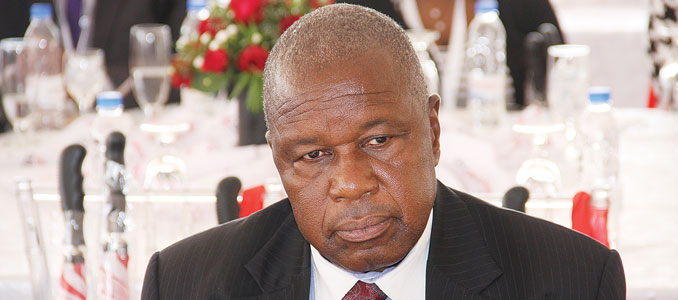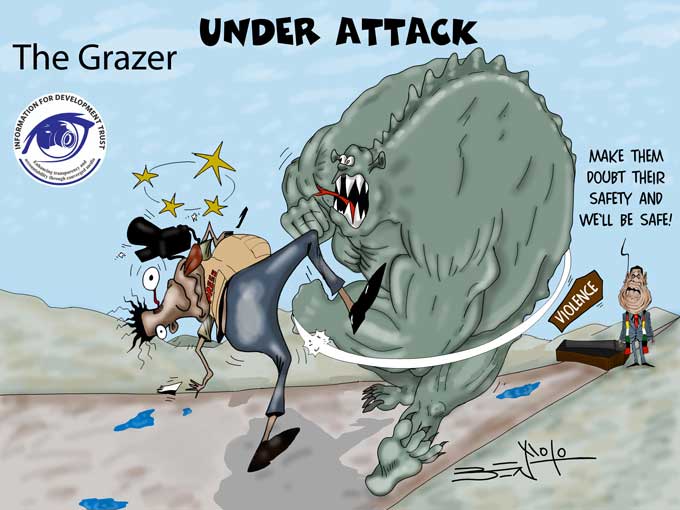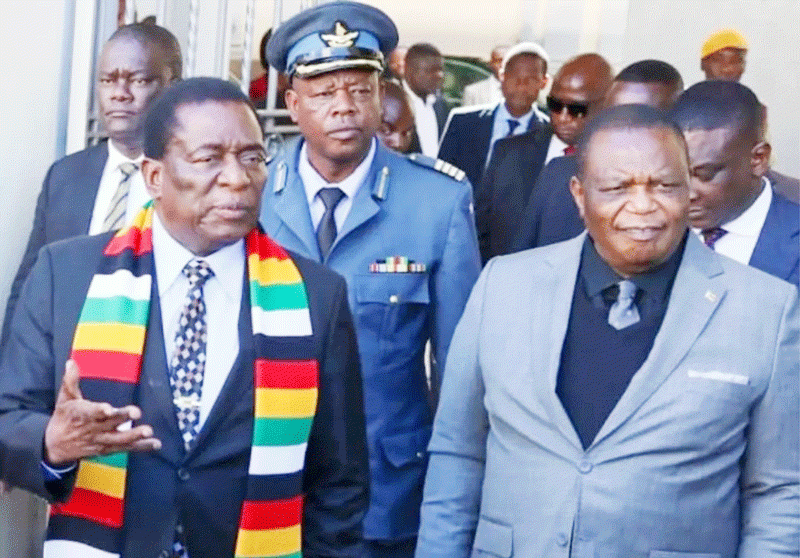
By Jonathan Maphenduka
THE decision to locate Zimbabwe’s new capital at Mount Hampden will indeed go down in history as the only decision that deserved poetic justice in memory of an episode whereby African nationalism and British imperialism converged. This is not only because the location is a shouting distance from Zvimba where Robert Mugabe lies immortalised after also naming that airport in Harare after him, but also because the Pioneer Column had also chosen Mount Hampden as the location of Southern Rhodesia’s capital.
Mount Hampden is linked to an interesting piece of history of this country. John H Harris in his book, The Chartered Millions, (1920) says Frank Johnson, commander of the famous Mashonaland Pioneers, knew the country well and had chosen Mount Hampden as the future capital of Southern Rhodesia.
To get there from Fort Tuli, the pioneers had to go through perfidious Lobengula’s Kingdom. This was the shortest way to their destination. This route, however, was closed to them at a time when they were not yet ready to invade Lobengula’s Kingdom. They finally decided to invade after acquiring five units of the devastating Maxim machine gun with which they decimated Lobengula’s warriors in less than three months.
By the way, the Maxim gun was used for the first time during the Anglo-Matabele war after its invention in 1885. The invaders had waited for five years before they moved in force into Mount Hampden kingdom. This was in sharp contrast with the claims of that notorious document, the Rudd Concession (1887), through which King Lobengula (his critics say) sold his domain and Mashonaland to the enemy for a bowl of sugar.
Those who read unadulterated history know better.
To avoid going through the Kingdom, therefore, the pioneers left Fort Tuli and headed east until they made a parallel line to what became the Jameson Line of June 1891. This route led them through the Providential Pass near what became Fort Victoria where they set up camp before some of them proceeded and found themselves in what became Salisbury instead. They did not have time to waste because they still had to deal with the perfidy in Lobengula’s Kingdom, which blocked Cecil John Rhodes’ romantic Cape to Cairo enterprise.
Let’s get back to Mount Hampden, which will undoubtedly take years to develop and many of us will not see its completed glory. One of the hurdles to be overcome before anyone will be allowed to move in, is the new capital’s sources of water. Nearby Darwendale Dam is too polluted (let alone its inadequacy) to be a source of water for a spanking new capital.
- Chamisa under fire over US$120K donation
- Mavhunga puts DeMbare into Chibuku quarterfinals
- Pension funds bet on Cabora Bassa oilfields
- Councils defy govt fire tender directive
Keep Reading
Government will, therefore, have to find a suitable source within a reasonable distance. This means building a dam with enough capacity to meet the needs of a city that is projected to be (when completed) out of Zimbabwe’s world. The new capital is being developed — not because there is a real need for it under such insurmountable economic constraints — but because human vanity dictates that Zimbabwe must be elevated to the level of rich nations using (an impossibility) its boot straps.
Such folly must be seen to be believed. The sense of priority of our leaders becomes questionable.
Now to the politics of the project. Zimbabwe is named after some ruins whose builders are still a subject of claims and counter-claims. But since Zimbabwe Ruins is a reality, barring the controversy regarding its builders, does logic dictate that the new capital should have been located in that province?
That would have helped reduce the Bambazonke influence that comes from Mashonaland against other regions of the country which has been cultivated by the ruling Zezuru-Karanga axis to which other regions of the country play second fiddle.
This country right now is celebrating 40 years of shameful failure of the axis to rule this country. Tyranny has been nurtured and used as a tool of illegitimate power, unacceptable to the commonwealth of nations, not only the British Commonwealth. The 40-year misrule of the country has cultivated intolerance which is used as a tool to suppress and oppress free speech, free thinking and all those rights that must be enjoyed in a democracy.
Had the decision favoured Masvingo, it would have saved the country (with Tokwe-Mukosi Dam now completed) the cost of piping water from Lake Kariba where the country enjoys only 36% of the lake’s riparian rights. Alternatively, government would have to build a pipeline from the projected Kudu Dam in the rich Kadoma district and build a holding dam near the new capital.
Distance will also determine whether to go for Lake Kariba or Kudu Dam. But if it turned out that Kudu was in fact too far away from Mount Hampden, and government settled for Lake Kariba, this would lose government the advantage of Kudu Dam from which a pipeline is to be extended to thirsty Ncema Dam in Esigodini to augment Bulawayo’s dwindling supply dams.
Although distance would be against the proposed Kudu Dam (which is only a storage tank for Lake Kariba water) as a source of water for Mount Hampden, government is already committed to using this option to extend a pipeline from Kudu to Ncema Dam to increase supplies for Bulawayo after the city lost Khami Dam which has become a sewer and sludge treatment dam.
The proposed Kudu-Ncema pipeline therefore has huge political implications.
Will government kill the chicken and lose its eggs? That is the painful question facing the government. If you were crazy enough to ask me, I would advise government to postpone Mount Hampden, and risk being lynched or shot in the back. Moreover, there is also the Dzamara option at someone’s disposal.
There is too much at stake in Kudu to be postponed to satisfy human vanity.
Although there has been a lot of talk on the government’s side about Bulawayo having a number of suitable dam sites around it, Mtshabezi is the only one which has been identified and developed, using Zimbabwean engineers and local labour. But the dam, although built as alternative supply dam for Bulawayo, it is now being claimed by Gwanda to the south as its own.
It becomes clear therefore that talk about numerous dam sites around Bulawayo is designed to divert attention away from the proposed Matabeleland Zambezi Water Project (MZWP) which is seen in the region as a more reliable source of relief water supplies for the city.
The country has virtually run out of options in its desire to provide unpolluted water from unpolluted and unsilted river systems and dams.
Jonathan Maphenduka Contact: 0772 332 404










